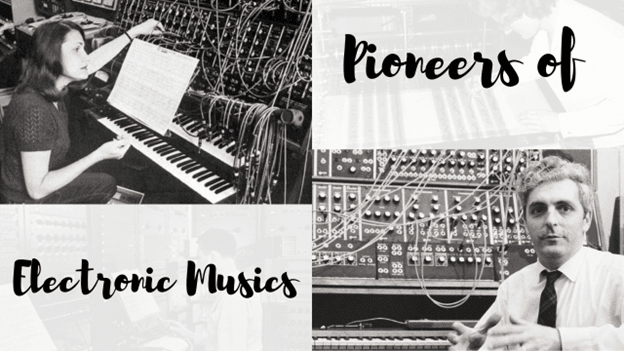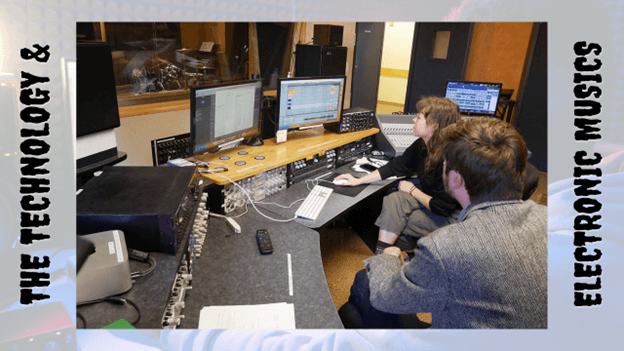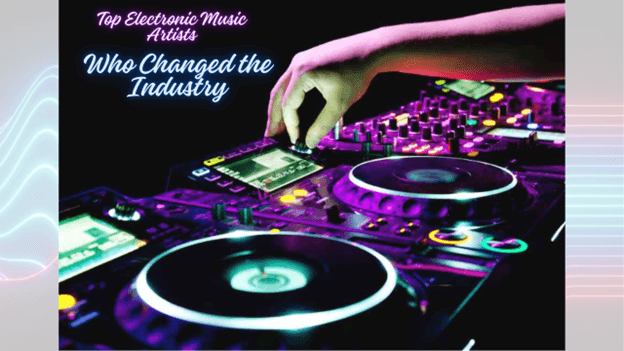Electronic music is just a piece of the history of music which has lasted several decades, that has been in continuous evolution, opening new ways of listening to the sound. So, let's explore this genre of music, know its varieties, and find out those iconic artists who defined and redefined it across decades.
What is Electronic Music?
Electronic Music And synthesizers, drum machines, samplers, computers that you make music with Where traditional music is built around acoustic instruments like the guitar or piano, family of sounds by way of voice or instrumentation, digitally-produced sounds to cover everything from beats to voice, tapping into a wide bank of sonic colors. That said, the sharp beauty in its potential. It can take you to a thumping nightclub, usher you into a mellow, ambient state, or provide the best accompaniment for an adrenaline-fueled workout.
The History of Electronic Music
The roots of music go back to the early 20th century, to experimental composers like Luigi Russolo, and later movers like Karlheinz Stockhausen. But it wasn’t really until electronic instruments were invented in the mid 20th century that the genre truly originated. 1940s-50s: Initial synthesizers, including the Theremin and the Ondes Martenot. 1960s–1970s: the electronic studio and instruments. 1980s: The explosion of digital technologies, MIDI (Musical Instrument Digital Interface) and drum machines.
Types of Electronic Musics
Music is an umbrella term with many sub genres. Each one has a distinct style, tempo, and purpose. Here’s a closer look:
House Music House music, which pulls from disco, is characterized by repetitive beats and soulful vibes. Its sound typically incorporates four-on-the-floor drum patterns and euphoric melodies.
Techno Techno developed in Detroit in the 1980s, marked by fast-moving, trance-like beats. Techno, with its futuristic and industrial-sounding music, is often linked to underground rave culture. Artists such as Carl Cox and Richie Hawtin are techno legends.
Trance This subgenre favours melody, atmosphere, and euphoria, known as trance. Tracks frequently reach peaks of emotional intensity, getting listeners in a “trance-like” state. Among the genre’s leading figures are Armin van Buuren and Tiesto.
Dubstep Heavy basslines and syncopated rhythms define dubstep, which first emerged in London. It gained worldwide fame through artists like Skrillex and Flux Pavilion.
Ambient Unlike standard beat music which has a structured formula, ambient music is more of an uneven flow creating a mood or atmosphere. It is frequently employed for relaxation or meditation. Brian Eno is a pioneer of ambient electronic music.
Drum and Bass Fast breakdowns and heavy basslines characterize the genre of drum and bass (D&B), which first emerged in the UK’s jungle scene. This high-energy subgenre has managed to survive thanks to artists like Pendulum and Netsky.
Electro-Pop With its combination of electronic music and catchy pop melodies, the genre of electro-pop has ruled the charts for decades. Working in some form in the synth pop sub genre have been Kraftwerk and Depeche Mode, and more recently artists including Lady Gaga.
The Popularity of Electronic Musics
The beauty of music is its flexibility. From festival to home, there’s an electronic genre for every mood and occasion. Here’s why it appeals to so many:
- Flexibility: It stretches from dance floor-friendly hits to soothing ambient sounds.
- Innovation: The constant evolution means there’s always something new to be found.
- Why it is Popular around the Globe: Music has no language barriers.
- Accessibility: Technology advances have made it such that anyone with a laptop can begin producing.
Pioneers of Electronic Musics
 Kraftwerk
Often cited as the godfathers of electronics, Kraftwerk reshaped the genre through their robotic, minimalist approach in the 1970s. Autobahn and The Model are still iconic tracks.
Kraftwerk
Often cited as the godfathers of electronics, Kraftwerk reshaped the genre through their robotic, minimalist approach in the 1970s. Autobahn and The Model are still iconic tracks.
Jean-Michel Jarre This French composer spread music to huge numbers of listeners through his vast live shows and albums including Oxygène.
Daft Punk The iconic duo reinvented electronic by fusing house, funk and pop. Their album, Random Access Memories, won a Grammy for Album of the Year.
Aphex Twin And Aphex Twin known for his experimental, at times preposterous approach is a pillar of influence for music producers.
The Technology and Electronic Music
 From the very origins, technology has underpinned electronic music. Tools like synthesizers, drum machines, and also software like Ableton Live and FL Studio went on to make it easier for producers to build complex tracks.
From the very origins, technology has underpinned electronic music. Tools like synthesizers, drum machines, and also software like Ableton Live and FL Studio went on to make it easier for producers to build complex tracks.
We are also seeing things such as AI and advanced technology like virtual reality, paving the way for futuristic soundscapes and an immersive experience.
To Get Started in Electronic Musics
**Basics: **You should know what is meant by beats, rhythm, tempo, etc.
Gear Up: For software, begin with easy-to-use options like GarageBand or FL Studio.
Experiment: Blending genres or creating something out of the box does not scare the readers.
Use Riffs: Compare the tracks to those of music greats and take notes on their production methods.
Electronic Pop Culture Music in Electronic Music
With blockbuster movies and commercials, music has pervaded all the nooks of pop culture since.
Consider Hans Zimmer’s breathtaking electronic score for Inception, or how Calvin Harris’ hits drown out everything else on the radio.
Electronic became synonymous with events like Tomorrowland, Ultra Music Festival and Coachella, attracting millions of fans every year.
Conclusion
Electric music from its workhorse days, electronic music has grown into a world-dominating genre. Boasting a myriad of subgenres and the potential to merge technological innovation with artistic creativity, music's reach attracted a wider audience in the late 20th century and continues to push further, shaping the sound of not just dance floors but also pop, rock and, to some degree, film soundtracks.
Frequently Asked Questions
1. What is electronic music? Music is created by electronic devices (synthesizer, computer, drum machine) which enable artists to control sound in ways that A normal instrument cannot.
2. Where did it all begin for electronic music? It started in the early 20th century with inventions such as the theremin, and the synthesizer and drum machine drove entirely new ways of making sound.
3. Which Styles Does Music Include? There are several popular subgenres, including Techno, House, Trance, and Drum and Bass, each with its distinct sound ranging from pulsating beats to ethereal melodies.
4. Why is music so popular? That, combined with its creative possibilities, flexibility and capacity to unite different communities, has made it popular. It provides an inclusive and experimental space for artists and fans.
5. So what is the function of live performances? Live shows, and festivals such as Tomorrowland and Ultra Music Festival, play an essential role in the experience where DJs remix, and create live sets, further connecting with the audiences.



